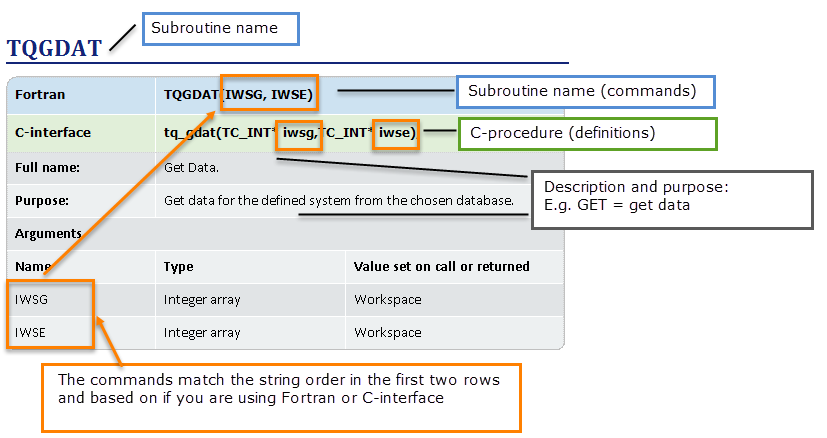TQGDF2
| Fortran |
TQGDF2 (MODE, IMATR, IPREC, NIE, IIE, XMATR, TEMP, DF, XPREC, XEM, XEP, MUI, IWSG, IWSE) |
|
|---|---|---|
| C-interface |
tq_gdf2(TC_INT mode,TC_INT imatr,TC_INT iprec,TC_INT nie,TC_INT *iie,TC_FLOAT* xmatr,TC_FLOAT temp,TC_FLOAT* df,TC_FLOAT* xprec,TC_FLOAT* xem,TC_FLOAT* xep,TC_FLOAT* mui,TC_INT* iwsg,TC_INT* iwse); |
|
|
Full name: |
Get the driving force of nucleation and local equilibrium concentration for a phase transformation under para- or ortho-equilibrium condition. |
|
|
Purpose: |
Obtain data on both the chemical driving force for the nucleation of a precipitate and the local equilibrium concentration at the matrix/precipitate interface under para- or ortho-equilibrium conditions. See Example 11. |
|
|
Comments: |
For ortho-equilibrium calculations, XPREC can be inputs or outputs, depending on whether its values are known before the calculation or not. If unknown, the values of XPREC should be set to zero or negative when calling this subroutine and on return one obtains the composition of the precipitate at which the maximum driving force is available. The use of this subroutine for the ortho-equilibrium calculation supersedes that of the obsolete subroutine TQGDF. |
|
|
Arguments |
||
|
Name |
Type |
Value set on call or returned |
|
MODE |
Integer |
Set type of output and type of composition to use (±1, ±2, and ±3 correspond to mole fraction, weight fraction and U-fraction respectively. However, ±3 can be used only with para-equilibrium calculations. If negative, calculate and output only driving force data. This saves the time for equilibrium calculation when you are not interested in local equilibrium concentrations) |
|
IMATR |
Integer |
Set index of matrix phase |
|
IPREC |
Integer |
Set index of precipitate phase |
|
NIE |
Integer |
Set number of interstitial element(s). Zero implies no para-equilibrium calculation |
|
IIE |
Integer array |
Set index of interstitial element(s), only relevant for para-equilibrium condition |
|
XMATR |
Double precision array |
Set composition of matrix phase. Composition type depends on MODE |
|
TEMP |
Double precision |
Set temperature in Kelvin |
| DF |
Double precision |
Return driving force in J/mol of atoms if MODE = ±1, ±2 and J/mole of substitional atoms if MODE = ±3 |
|
XPREC |
Double precision array |
Return composition of the precipitate phase at the maximum driving force under para/ ortho-equilibrium condition or set to a known composition of the precipitate in order to get the driving force of phase transformation. Composition type depends on MODE |
|
XEM |
Double precision array |
Return, if both MODE and DF are positive, local equilibrium composition of matrix phase. Composition type depends on MODE |
|
XEP |
Double precision array |
Return, if both MODE and DF positive, local equilibrium composition of precipitate phase. Composition type depends on MODE |
|
MUI |
Double precision array |
Return, if both MODE and DF are positive, chemical potential of interstitial elements. Relevant for only para-equilibrium calculation. |
|
IWSG |
Integer array |
Workspace |
|
IWSE |
Integer array |
Workspace |
Note the following conventions to distinguish between the programming languages.
- Routines starting with TQXXX, for example, TQGDAT, are in the Fortran interface
- Routines starting with tq_xxxx, for example tq_gdat, are in the C-interface.
- In Fortran, all routines are subroutines and do not return any values except where explicitly declared as functions.
- All the C procedures are declared as void and do not return any values except where explicitly otherwise declared.
An example of how to read the subroutine definitions.
